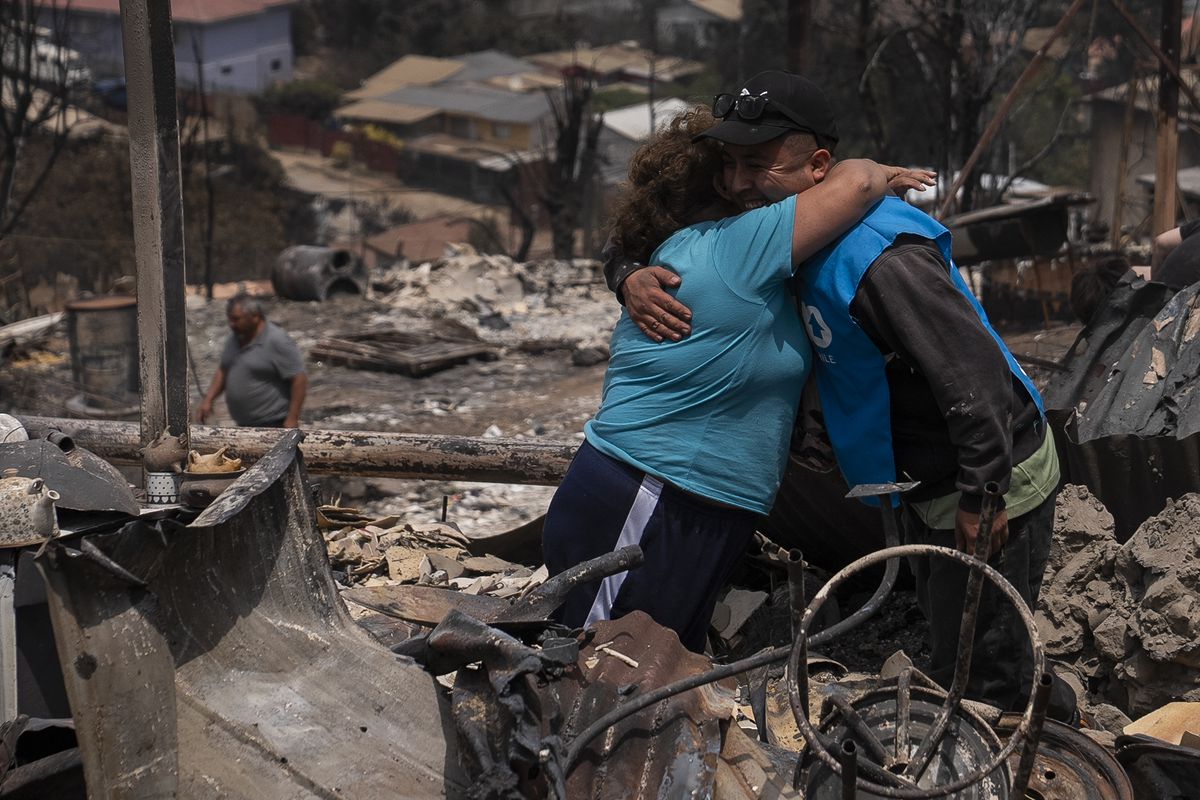One of the big questions surrounding the tragedy of the forest fires in Chile is why so many people died.
The Legal Medical Service (SML), the state agency in charge of identifying the victims, has reported that the number rises to 131, but with hundreds missing, authorities have reiterated that the final number will likely be much higher.
The largest fire recorded at surface level in the South American country was in 2017, when the fire devastated some 570,000 hectares and left 11 dead, according to the National Forestry Corporation (Conaf).
This year just over 55,000 have burned.
Investigations to understand how it became Chile's biggest tragedy since the 2010 earthquake are ongoing.
So far, the reasons given by experts are multifactorial.
The role of alerts
In emergency cases, Chileans receive an alarm on their phones from the Emergency Alert System (SAE), administered by the National Disaster Prevention and Response Service (Senapred), a government agency.
The alert is built into all mobile phones and provides evacuation notices in cases of tsunami or forest fires.
President Gabriel Boric has said that the alerts came, according to what he has seen on the ground, but that “for different reasons the fire was going very fast, at more than 10 kilometers per hour.
That's faster than people walk.
But we want to make sure the SAE systems worked and if not, know what happened.”
To clear up doubts, the president commissioned an external investigation from the European Union and collected all the information through a satellite emergency monitoring program.
A group of people observe a fire in the Peñuelas Lake nature reserve, on February 2.
ADRIANA THOMASA (EFE)
Possible intentionality
Álvaro Hormazabal, director of Senapred, assured that in the first stage of the forest fire season, Conaf managed to attack 95% before they reached three hectares burned.
Planning was based on studies on the number of events that can occur.
"When you are faced with about nine fires simultaneously, undoubtedly that does not fit... There is no system in the world that is prepared for a logic that indicates that there are going to be people lighting fires surrounding a city," he said, reinforcing the theory about the intentionality of the fire sources, something that has not been proven until now.
Increase in fires
Fires in Chile are increasing both in frequency and intensity.
Those of 2017, also in the central area of the country, forced to modify the scale with which accidents were measured globally.
“And yet, they continue to be handled as if they were an unexpected surprise,” as Andrea Bizberg, advisor for Latin America on air quality and climate change at C40 Cities, pointed out in a column in this newspaper.
According to her research in Global Forest Watch, a digital tool that monitors the state of forests globally, the main trigger of deforestation in Chile is forest plantations, especially in the central area of the country.
“The environmental and social impacts of the forestry industry are well documented.
And these are exacerbated by climate change,” she noted.
Chile is expected to suffer an increase in temperatures combined with water stress.
Estimates indicate that average rainfall is 20% less than in past years.
This is particularly accentuated in the central area of the country.
Aerial view of an area of Viña del Mar affected by fires, on February 5, 2024. Cristóbal Venegas
Personal reasons
The Minister of the Interior, Carolina Tohá, said: "We have many elements from places where we know that the alert came and still there were fatalities, either because they delayed evacuating or because they did not perceive the fire."
In this newspaper's reporting on the affected land in Viña del Mar, it was possible to gather different reasons why some residents died.
Older adults, for example, had difficulty moving quickly, cars caused bottlenecks on the narrow roads in the hills, some received the alert just a few minutes before the fire burned them and others returned to rescue their pets. .
There have also been complaints from survivors that the alerts indicated to evacuate, but did not specify where.
The reasons are multiple and diverse, reported by close friends or witnesses.
Subscribe here
to the EL PAÍS Chile newsletter and receive all the key information on current events in the country.

